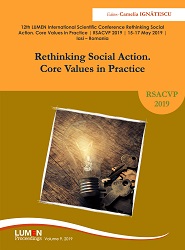The Model of Extended Reproduction of Human Capital in Russian Regions (the Example of Karelia Republic)
The Model of Extended Reproduction of Human Capital in Russian Regions (the Example of Karelia Republic)
Author(s): Aleksandra Kekkonen, Eugene Pitukhin
Subject(s): Business Economy / Management, Human Resources in Economy
Published by: Editura Lumen, Asociatia Lumen
Keywords: human capital; forecasting; regional economic development; mathematic modelling; governance efficiency;
Summary/Abstract: The Karelia Republic is one of Russian regions with low rating where complex instruments for human capital development are implemented. Quantification of collective human capital level and its contribution to economic development is the method to evaluate the governance efficiency. The extended human capital reproduction evaluation model and its accounting in GDP production based on mathematical modelling methods, forecasting and econometrics is presented. Results include:- The production function model, based on Mankiw–Romer–Weil model modification, which allows to consider together endogenous scientific and technical progress, and the human capital.- A new model for extended human capital reproduction evaluation includes among 4 known stages of reproduction, 3 more stages. It also considers the human development index, population quality index and intellectual capital development index. The presence in the model the penalty function for inappropriate use of human capital in the economy is key feature.Proposed method was implemented in the Republic of Karelia and its advantage is open source data: official state and departmental statistics for quantitative assessment of model parameters and subsequent calculations are enough. Expensive surveys are not required. This method is effective for use in depressed regions with low financing/ The model is universal and can be used for quantification and comparison of human capital, and its effectiveness in the production of goods and services in various regions.
Book: Rethinking Social Action. Core Values in Practice
- Page Range: 164-179
- Page Count: 15
- Publication Year: 2019
- Language: English
- Content File-PDF

